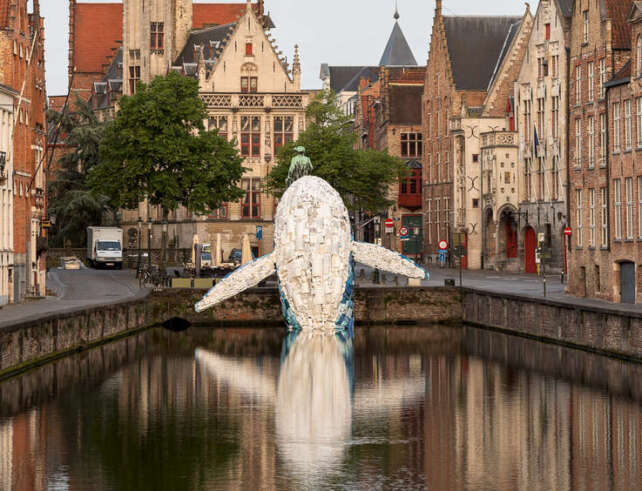At the end of 2017, China announced that it would no longer import non-industrial plastic. Europe and the United States, mainly, went on alert. In May 2018, the European Commission presented, in Brussels, some measures to reduce pollution in the seas and oceans, including a ban on the use of plastic in various products.
This news, when read like this, doesn’t have much of an impact, as the society didn’t even know about the new guidelines, didn’t understand China’s motives or the fuss. What really shocked everyone were the National Geographic articles from June. With the title “Planet or Plastic?” and impressive photos, the magazine managed to awaken a sense of responsibility in many people.
You may not know, but 70% of the waste found in the sea is plastic. There are many millions of tons per year in the oceans and many dead animals! Therefore, straws, cotton swabs, disposable cutlery and plates, and balloon stems, for example, have their days numbered. Furthermore, single-use plastic containers for drinks or food will have to be reduced according to fixed national targets, other single-use plastic products will have to be charged (the grocery bag is one of them), and plastic bottles will only be approved if their lids remain intact, attached to packaging. The best: producers will have part of the responsibility for managing and cleaning this plastic waste, and industries will receive incentives to develop more sustainable alternatives.
Europe has already started to put the changes into practice. Portugal will install plastic collection units in establishments that sell plastic products the most, such as supermarkets. Whatever is delivered will be weighed and exchanged for a shopping voucher at those same locations. There has been a charge for plastic bags there since February 2015.
Furthermore, 14 Portuguese beaches will participate in the “TransforMAR” (sort of TransformSEA) campaign, which aims to convert the collected plastic into materials for physical activities. Anyone caught collecting can win discount vouchers at Lidl, a supermarket chain in Portugal, which is promoting this initiative with other partners.
London is installing drinking fountains and public drinking water fountains across the city, and has launched the “Refill London” campaign to encourage shops, businesses and cafes to provide free water to the public. If the measure is successful, other cities in the United Kingdom will also have this structure in place.
In Brazil, there are projects that forbid plastic straws, but they have not yet been voted on.
Some companies have also started to make moves. By September this year, McDonald’s will replace plastic straws with ecological paper ones in all restaurants (almost 1,400) in the United Kingdom and Ireland. The company, which intends to do the same in other countries, already has the USA, France and Norway as the next to benefit from the action. On the same wavelength are investors from Nestlé, PepsiCo, Procter & Gamble and Unilever, who are demanding that those companies reduce the use of plastic in their product packaging.

Less than 50% of all plastic produced in the world is recycled. Recycling is highest in Europe (30%). China recycles 25%. The US recycles just 9% of its plastic waste.
Source: NGM STAFF. SOURCE: ROLAND GEYER, UNIVERSITY OF CALIFORNIA, SANTA BARBARA
It is clear that concern for nature is the basis for these actions. But it took China announcing a ban on plastic imports for the world to start acting. It’s progress being forced to happen since January 2018.
And why does China no longer want to receive plastics? Because what was profitable once (treating, recycling and selling) is no longer. In addition to the fact that this country has increased its own production, according to a study published in Science Advances, in recent years the quality of plastic sent to China was not good, which made sales and profitability a challenge. As a consequence, several countries urgently need to review their consumption and management policies for this material, so that it does not end up in landfills and seas. And this directly involves us, consumers, who also need to change habits. As National Geographic asks, “Take the Pledge: Planet or Plastic?”
40% of the plastic produced in the world is for packaging, used only once and discarded.
Source: NGM STAFF. SOURCES: PLASTICSEUROPE; POPULATION REFERENCE BUREAU

